一、Playbook语法
Ansible-playbook采用YAML语法编写。
[root@www.wulaoer.org ~]# cat yaml/httpd.yaml
---
- hosts: control-node # 将要执行任务的主机,已经在hosts文件中定义好了,可是单个主机或主机组
remote_user: root # 在目标主机上执行任务时的用户身份
vars:
- pkg: httpd
tasks:
- name: "install httpd package."
yum: name={{ pkg }} state=installed
- name: "copy httpd configure file to remote host."
copy: src=/root/conf/httpd.conf dest=/etc/httpd/conf/httpd.conf
notify: restart httpd # 当这个任务执行状态发生改变时,触发handlers执行.
- name: "boot httpd service."
service: name=httpd state=started
handlers: # handlers与tasks是同一级别
- name: restart httpd
service: name=httpd state=restarted
连续的项目(即列表)用 -减号来表示,key/value(字典)用冒号:分隔。
playbook语法有如下特性:
- 以 --- (三个减号)开始,必须顶行写;
- 次行开始写Playbook的内容,但是一般要求写明该playbook的功能;
- 严格缩进,并且不能用Tab键缩进;
- 缩进级别必须是一致的,同样的缩进代表同样的级别,程序判别配置的级别是通过缩进结合换行来实现的;
- K/V的值可同行写,也可换行写。同行使用 :分隔,换行写需要以 - 分隔;
执行playbook:
[root@www.wulaoer.org ~]# ansible-playbook yaml/httpd.yaml PLAY [control-node] ******************************************************************************************************** TASK [Gathering Facts] ***************************************************************************************************** ok: [openstack-control2] ok: [openstack-control1] TASK [install httpd package.] ********************************************************************************************** changed: [openstack-control2] changed: [openstack-control1] TASK [copy httpd configure file to remote host.] *************************************************************************** changed: [openstack-control1] changed: [openstack-control2] TASK [boot httpd service.] ************************************************************************************************* changed: [openstack-control2] changed: [openstack-control1] PLAY RECAP ***************************************************************************************************************** openstack-control1 : ok=4 changed=3 unreachable=0 failed=0 openstack-control2 : ok=4 changed=3 unreachable=0 failed=0
二、Playbook中的变量
2.1 yaml文件中定义变量
[root@www.wulaoer.org ~]# cat yaml/vars.yaml
---
- hosts: compute-node
remote_user: root
vars:
pkg: httpd # 定义变量
tasks:
- name: install httpd service
yum: name={{ pkg }} state=installed # 引用变量
playbook中用vars关键字声明变量,变量定义 变量名: 变量值
变量引用 :{{ 变量名 }}
2.2 引用外部变量
在命令行使用--extra-vars参数赋值变量;
[root@www.wulaoer.org ~]# cat yaml/extra_vars.yaml
---
- hosts: control-node
remote_user: root
tasks:
- name: create a file
file:
path: /tmp/{{ filename }} # 引用外部变量
mode: 0644
state: touch
命令行使用--extra_vars传入变量:
[root@www.wulaoer.org ~]# ansible-playbook yaml/extra_vars.yaml --extra-vars "filename=temp.txt"
--extra_vars "变量名=变量值"
2.3 资产清单(inventory)中定义的变量
也就是在/etc/ansible/hosts文件中定义的变量;
[root@www.wulaoer.org ~]# cat /etc/ansible/hosts [load-node] openstack-load1 openstack-load2 [compute-node] openstack-compute1 ansible_ssh_host=10.0.1.10 ansible_ssh_port=2002 ansible_ssh_user=stanley ansible_ssh_pass=etyfhzmweadf openstack-compute2 [control-node] openstack-control1 filename=control1.txt # 主机变量 openstack-control2 filename=control2.txt [openstack:children] load-node compute-node control-node [openstack:vars] issue="Hello, World" # 组变量
注意:组变量定义时,不要落下关键字vars,[组名:vars]。
在playbook中引用{{ 变量名 }}即可。
ansible内置了一些固定的主机变量名,在inventory中定义其值,如下:
ansible_ssh_host
将要连接的远程主机名.与你想要设定的主机的别名不同的话,可通过此变量设置.
ansible_ssh_port
ssh端口号.如果不是默认的端口号,通过此变量设置.
ansible_ssh_user
默认的 ssh 用户名
ansible_ssh_pass
ssh 密码(这种方式并不安全,我们强烈建议使用 --ask-pass 或 SSH 密钥)
ansible_sudo_pass
sudo 密码(这种方式并不安全,我们强烈建议使用 --ask-sudo-pass)
ansible_sudo_exe (new in version 1.8)
sudo 命令路径(适用于1.8及以上版本)
ansible_connection
与主机的连接类型.比如:local, ssh 或者 paramiko. Ansible 1.2 以前默认使用 paramiko.1.2 以后默认使用 'smart','smart' 方式会根据是否支持 ControlPersist, 来判断'ssh' 方式是否可行.
ansible_ssh_private_key_file
ssh 使用的私钥文件.适用于有多个密钥,而你不想使用 SSH 代理的情况.
ansible_shell_type
目标系统的shell类型.默认情况下,命令的执行使用 'sh' 语法,可设置为 'csh' 或 'fish'.
ansible_python_interpreter
目标主机的 python 路径.适用于的情况: 系统中有多个 Python, 或者命令路径不是"/usr/bin/python",比如 \*BSD, 或者 /usr/bin/python
不是 2.X 版本的 Python.我们不使用 "/usr/bin/env" 机制,因为这要求远程用户的路径设置正确,且要求 "python" 可执行程序名不可为 python以外的名字(实际有可能名为python26).
与 ansible_python_interpreter 的工作方式相同,可设定如 ruby 或 perl 的路径....
2.4 直接使用facts变量
使用命令ansible all -m setup获取到的主机信息,其中的KEY都可以被当作变量引用:
[root@www.wulaoer.org ~]# cat yaml/facts_vars.yaml
---
- hosts: compute-node
remote_user: root
tasks:
- name: write fqdn into fqdn.log
shell: "echo {{ ansible_fqdn }} {{ ansible_eth1.ipv4.address }} > /tmp/fqdn.log"
上述代码中{{ ansible_fqdn }}就是直接引用的facts变量;
{{ ansible_eth1.ipv4.address }} 引用的值就相当于下面这样。
{
"ansible_eth1": {
"ipv4": {
"address":10.0.1.10,
},
},
}
最终{{ ansible_eth1.ipv4.address }}=10.0.1.10
2.5 注册变量
在playbook中用register关键字定义一个变量,这个变量的值就是当前任务执行的输出结果;
[root@www.wulaoer.org ~]# cat yaml/reg_vars.yaml
---
- hosts: load-node
remote_user: root
tasks:
- name: show date
shell: "/bin/date"
register: date # 注册一个变量
- name: Record time log
shell: "echo {{ date.stdout }} > /tmp/date.log"
引用注册变量要用 {{ date.stdout }}表示标准输出。
[root@openstack-load1 ~]# cat /tmp/date.log 2018年 03月 29日 星期四 15:52:01 CST
如果直接{{ date }}这样引用,则文件中写入的是如下内容:
{stderr_lines: [], uchanged: True, uend: u2018-03-29 15:49:52.609894, failed: False, ustdout: u2018\u5e74 03\u6708 29\u65e5 \u661f\u671f\u56db 15:49:52 CST, ucmd: u/bin/date, urc: 0, ustart: u2018-03-29 15:49:52.602918, ustderr: u, udelta: u0:00:00.006976, stdout_lines: [u2018\u5e74 03\u6708 29\u65e5 \u661f\u671f\u56db 15:49:52 CST]}
2.6 变量优先级
上述这些变量定义的方法,它们的优先级如下:
- 在命令行中定义的变量(即用-e或--extra-vars定义的变量);
- 在Inventory中定义的连接变量(比如:ansible_ssh_user);
- 大多数的其他变量(命令行转换、play中的变量、included的变量、role中的变量等);
- 在Inventory中定义的其他变量;
- Facts变量;
- “Role”默认变量,这个是默认的值,很容易丧失优先权。
三、Playbook中的方法
3.1 handlers
在需要被监控的任务(tasks)中定义一个notify,只有当这个任务被执行时,才会触发notify对应的handlers去执行相应操作。
[root@www.wulaoer.org ~]# cat yaml/httpd.yaml
---
- hosts: control-node
remote_user: root
vars:
- pkg: httpd
tasks:
- name: "install httpd package."
yum: name={{ pkg }} state=installed
- name: "copy httpd configure file to remote host."
copy: src=/root/conf/httpd.conf dest=/etc/httpd/conf/httpd.conf
notify: restart httpd
- name: "boot httpd service."
service: name=httpd state=started
handlers:
- name: restart httpd
service: name=httpd state=restarted
在使用handlers的过程中,有以下几点需要注意:
- handlers只有在其所在的任务被执行时,都会被运行;
- handlers只会在Play的末尾运行一次;如果想在一个Playbook的中间运行handlers,则需要使用meta模块来实现,例如:- meta: flush_handlers。
- 如果一个Play在运行到调用handlers的语句之前失败了,那么这个handlers将不会被执行。我们可以使用mega模块的--force-handlers选项来强制执行handlers,即使在handlers所在Play中途运行失败也能执行。
3.2 tags
tags用于让用户选择运行playbook中的部分代码。ansible具有幂等性,因此会自动跳过没有变化的部分,即便如此,有些代码为测试其确实没有发生变化的时间依然会非常地长。此时,如果确信其没有变化,就可以通过tags跳过此些代码片断。
ansible的标签(Tags)功能可以给角色(Roles)、文件、单独的任务,甚至整个Playbook打上标签,然后利用这些标签来指定要运行Playbook中的个别任务,或不执行指定的任务。
[root@www.wulaoer.org ~]# cat yaml/httpd.yaml
---
- hosts: control-node
remote_user: root
vars:
- pkg: httpd
tasks:
- name: "install httpd package."
yum: name={{ pkg }} state=installed
- name: "copy httpd configure file to remote host."
copy: src=/root/conf/httpd.conf dest=/etc/httpd/conf/httpd.conf
notify: restart httpd
- name: "start httpd service."
tags:
- start_httpd # 给“start httpd service”这个任务打个标签
service: name=httpd state=started
handlers:
- name: restart httpd
service: name=httpd state=restarted
在命令行中调用:
[root@www.wulaoer.org ~]# ansible-playbook yaml/httpd.yaml --tags start_httpd PLAY [control-node] ******************************************************************************************************** TASK [Gathering Facts] ***************************************************************************************************** ok: [openstack-control1] ok: [openstack-control2] TASK [start httpd service.] ************************************************************************************************ ok: [openstack-control1] ok: [openstack-control2] PLAY RECAP ***************************************************************************************************************** openstack-control1 : ok=2 changed=0 unreachable=0 failed=0 openstack-control2 : ok=2 changed=0 unreachable=0 failed=0
四、Playbook的流程控制
4.1 when 条件判断
当关键字when后面的条件满足时(也就是通过运算得到的结果为true时),才会执行当前任务。
示例如下(yaml/when.yaml):
- hosts: load-node,img
remote_user: root
tasks:
- name: "touch flag file"
command: "touch /tmp/this_is_{{ ansible_distribution }}_system"
when: (ansible_distribution == "CentOS" and ansible_distribution_major_version == '6') or
(ansible_distribution == "Debian" and ansible_distribution_major_version == '7')
上述代码中,ansible_distribution和ansible_distribution_major_version都是是Facts变量,分别表示Linux发行版和版本号
执行结果如下图:
4.2 循环语句
Playbook中的循环类型,如下表:
注意:列表中前三个为常用的循环语句。
4.2.1 标准循环 with_items
示例1(with_items_1.yaml):
---
- name: when and with_items
hosts: load-node
remote_user: root
gather_facts: false
tasks:
- name: Create thress groups
group: name=testgroup6 state=present
ignore_errors: yes
register: excu_result
- name: Append excu_result to tmp.txt
shell: "echo {{ excu_result }} > /tmp/tmp.txt"
- name: Create some users
user: name={{ item }} group=testgroup6 state=present
when: excu_result|success
with_items:
- testuser1
- testuser2
- testuser3
释义:
- gather_facts: false表示运行此playbook时不收集目标主机的系统信息。因为默认此项是开启的,每次运行playbook都会收集主机facts,这会影响playbook的运行速度。将gather_facts设为false即可关闭。
- when:excu_result|success的意思为当变量excu_result执行结果为成功状态,则执行当前的任务。其中success为Ansible内部过滤器方法,返回True代表命令运行成功。还有excu_result|failed表示excu_result执行结果为失败状态;excu_result|skipped表示excu_result执行被跳过。
- with_items的值还可以写成[testuser1, testuser2, testuser3]
示例2:
添加多个用户,并将用户加入不同的组内:
- name: add several users
user: name={{ item.name }} state=present groups={{ item.groups }}
with_items:
- { name: 'testuser1', groups: 'wheel' }
- { name: 'testuser2', groups: 'root' }
4.2.2 遍历字典 with_dict
输出用户的姓名和电话:
---
- hosts: load-node
remote_user: root
tasks:
- name: print phone records
debug: msg="User {{ item.key }} is {{ item.value.name }} ({{ item.value.phone }})"
with_dict: {'alice':{'name':'Alice Appleworth', 'phone':'13243252136'}, 'bob':{'name':'Bob Banarama', 'phone': '18766761211'}}
注意:Playbook中对字典的循环,与python中对字典循环类似,取值方法也一样。
4.2.3 遍历目录文件 with_fileglob
遍历/root/sh/目录下的所有文件,并将其拷贝至目标主机。
[root@www.wulaoer.org ~]# cat yaml/with_fileglob.yaml
---
- hosts: DH-TEST
remote_user: root
gather_facts: false
tasks:
- name: create a directory
file: path=/root/script state=directory
ignore_errors: yes
register: result
- name: copy some scripts
copy: src={{ item }} dest=/root/script owner=root mode=600
when: result|success
with_fileglob:
- /root/sh/*
注意:with_fileglob匹配单个目录中的所有文件,非递归匹配模式。
执行结果:
五、Playbook任务计时插件
Github地址: https://github.com/jlafon/ansible-profile
安装这个插件后会显示 ansible-playbook 执行每一个任务所花费的时间。
这个插件安装很简单,只需要简单的三个命令即可完成安装。在你的 playbook 文件的目录下创建一个目录,目录名 callback_plugins 然后将下载的 profile_tasks.py 文件放到该目录下即可。
# mkdir callback_plugins # cd callback_plugins # wget https://raw.githubusercontent.com/jlafon/ansible-profile/master/callback_plugins/profile_tasks.py
六、Playbook异常处理
6.1 ignore_errors
在有些情况下,一些必须运行的命令或脚本会报一些错误,而这些错误并不一定真的说明有问题,但是经常会给接下来要运行的任务造成困扰,甚至直接导致playbook运行中断。
这时候,我们可以在相关任务中添加ignore_errors: true来屏蔽当前任务的报错信息。ansible也将视该任务运行成功,不再报错,这样就不会对接下来要运行的任务造成额外困扰。但是要注意的是,我们不应过度依赖ignore_errors,因为它会隐藏所有的报错信息,而应该把精力集中在寻找报错的原因上面,这样才能从根本上解决问题。
[root@www.wulaoer.org ~]# cat yaml/httpd.yaml
---
- hosts: load-node
remote_user: root
vars:
- pkg: httpd
tasks:
- name: "install httpd package."
yum: name={{ pkg }} state=installed
- name: "copy httpd configure file to remote host."
copy: src=/root/config/httpd.conf dest=/etc/httpd/conf/httpd.conf
notify: restart httpd
ignore_errors: true # 忽略错误
- name: "start httpd service."
tags:
- start_httpd
service: name=httpd state=started
handlers:
- name: restart httpd
service: name=httpd state=restarted
上述代码中,任务"copy httpd configure file to remote host."中的src是一个不存在的路径,所以此任务运行一定会出错。这个playbook运行结果如下图:
从运行结果图中可以看到有两个...ignoring,表示忽略了这些错误,并继续执行下面的任务。
6.2 failed_when
当满足一定的条件时,主动抛出错误。
[root@www.wulaoer.org ~]# cat yaml/failed_when.yaml
---
- hosts: DH-TEST
remote_user: root
gather_facts: false
tasks:
- name: get process
shell: ps aux | wc -l
register: process_count
failed_when: process_count > 3
- name: touch a file
file: path=/tmp/test3.txt state=touch owner=root mode=0700
failed_when: process_count > 3当进程数大于3时主动抛出错误,后续任务就不会执行了。如果不满足条件,则不会抛出错误。
6.3 changed_when
[root@www.wulaoer.org ~]# cat yaml/changed_when.yaml
---
- hosts: DH-TEST
remote_user: root
gather_facts: false
tasks:
- name: touch a file
file: path=/tmp/changed_test state=touch
上述Playbook执行结果如下图:
如果想要关闭状态改变的提示,则可以添加changed_when: false,如下:
[root@www.wulaoer.org ~]# cat yaml/changed_when.yaml
---
- hosts: DH-TEST
remote_user: root
gather_facts: false
tasks:
- name: touch a file
file: path=/tmp/changed_testi2 state=touch
changed_when: false # 关闭状态改变提示
执行结果如下图:
七、Roles
Roles是一种利用在大型Playbook中的剧本配置模式,它有着自己特定的结构。用于层次性、结构化地组织playbook。roles能够根据层次型结构自动装载变量文件、tasks以及handlers等。要使用roles只需要在playbook中使用include指令即可。简单来讲,roles就是通过分别将变量、文件、任务、模板及处理器放置于单独的目录中,并可以便捷地include它们的一种机制。角色一般用于基于主机构建服务的场景中,但也可以是用于构建守护进程等场景中。
剧本roles设计思路:将公共任务、资源、变量等对象尽可能独立。
一个roles的案例如下所示:
site.yml # 主入口文件
webservers.yml # webserver类型服务所用的剧本
dbservers.yml # 数据库类型的服务所用的剧本
files/ # 存放通用的将要被上传的文件
templates/ # 存放通用的模板文件
roles/ # roles目录名称是固定的
common/ # 此目录下的各个组件是所有角色共用的
tasks/ # 存放通用的任务文件
handlers/ # 存放通用的处理器文件
vars/ # 存放通用的变量文件
meta/ # 存放通用的角色依赖文件
webservers/ # 存放webserver类型的服务的各个组件
files/ # 存放webserver角色需要的上传文件
templates/ # 存放webserver角色需要的模板文件
tasks/
handlers/
vars/
meta/
而在playbook中,可以这样使用roles:
---
- hosts: webservers
roles:
- common
- webservers
也可以向roles传递参数,例如:
---
- hosts: webservers
roles:
- common
- { role: foo_app_instance, dir: '/opt/a', port: 5000 }
- { role: foo_app_instance, dir: '/opt/b', port: 5001 }
甚至也可以条件式地使用roles,例如:
---
- hosts: webservers
roles:
- { role: some_role, when: "ansible_os_family == 'RedHat'"
先看一下这个roles的目录结构:
[root@www.wulaoer.org ansible-examples-master]# tree [root@www.wulaoer.org ansible-examples-master]# tree lamp_simple lamp_simple ├── group_vars │ ├── all │ └── dbservers ├── hosts ├── LICENSE.md ├── README.md ├── roles │ ├── common │ │ ├── handlers │ │ │ └── main.yml │ │ ├── tasks │ │ │ └── main.yml │ │ └── templates │ │ └── ntp.conf.j2 │ ├── db │ │ ├── handlers │ │ │ └── main.yml │ │ ├── tasks │ │ │ └── main.yml │ │ └── templates │ │ └── my.cnf.j2 │ └── web │ ├── handlers │ │ └── main.yml │ ├── tasks │ │ ├── copy_code.yml │ │ ├── install_httpd.yml │ │ └── main.yml │ └── templates │ └── index.php.j2 └── site.yml 14 directories, 17 files
查看各个playbook的内容:
- 查看主机清单文件
# cat lamp_simple/hosts
[webservers] web3 [dbservers] web2
- 查看主入口文件
# cat lamp_simeple/site.yml
---
# This playbook deploys the whole application stack in this site.
- name: apply common configuration to all nodes
hosts: all
remote_user: root
roles:
- common
- name: configure and deploy the webservers and application code
hosts: webservers
remote_user: root
roles:
- web
- name: deploy MySQL and configure the databases
hosts: dbservers
remote_user: root
roles:
- db
- 查看变量文件:
# cat lamp_simple/group_vars/all
# Variables listed here are applicable to all host groups httpd_port: 80 ntpserver: 192.168.1.2 repository: https://github.com/bennojoy/mywebapp.git
# cat lamp_simple/group_vars/dbservers
--- # The variables file used by the playbooks in the dbservers group. # These don't have to be explicitly imported by vars_files: they are autopopulated. mysqlservice: mysqld mysql_port: 3306 dbuser: foouser dbname: foodb upassword: abc
- 查看通用hanlder文件:
# cat lamp_simple/roles/common/handlers/main.yml
--- # Handler to handle common notifications. Handlers are called by other plays. # See http://docs.ansible.com/playbooks_intro.html for more information about handlers. - name: restart ntp service: name=ntpd state=restarted - name: restart iptables service: name=iptables state=restarted
- 查看通用tasks文件:
# cat lamp_simple/roles/common/tasks/main.yml
--- # This playbook contains common plays that will be run on all nodes. - name: Install ntp yum: name=ntp state=present tags: ntp - name: Configure ntp file template: src=ntp.conf.j2 dest=/etc/ntp.conf tags: ntp notify: restart ntp - name: Start the ntp service service: name=ntpd state=started enabled=yes tags: ntp - name: test to see if selinux is running command: getenforce register: sestatus changed_when: false
- 查看通用模板文件:
# cat lamp_simple/roles/common/templates/ntp.conf.j2
driftfile /var/lib/ntp/drift
restrict 127.0.0.1
restrict -6 ::1
server {{ ntpserver }}
includefile /etc/ntp/crypto/pw
keys /etc/ntp/keys
- 查看db角色的handlers文件:
# cat lamp_simple/roles/db/handlers/main.yml
--- # Handler to handle DB tier notifications - name: restart mysql service: name=mysqld state=restarted - name: restart iptables service: name=iptables state=restarted[root@LOCALHOST ansible-examples-master]# cat lamp_simple/roles/db/handlers/main.yml --- # Handler to handle DB tier notifications - name: restart mysql service: name=mysqld state=restarted - name: restart iptables service: name=iptables state=restarted
- 查看db角色的tasks文件:
# cat lamp_simple/roles/db/tasks/main.yml
---
# This playbook will install mysql and create db user and give permissions.
- name: Install Mysql package
yum: name={{ item }} state=installed
with_items:
- mysql-server
- MySQL-python
- libselinux-python
- libsemanage-python
- name: Configure SELinux to start mysql on any port
seboolean: name=mysql_connect_any state=true persistent=yes
when: sestatus.rc != 0
- name: Create Mysql configuration file
template: src=my.cnf.j2 dest=/etc/my.cnf
notify:
- restart mysql
- name: Start Mysql Service
service: name=mysqld state=started enabled=yes
- name: insert iptables rule
lineinfile: dest=/etc/sysconfig/iptables state=present regexp="{{ mysql_port }}"
insertafter="^:OUTPUT " line="-A INPUT -p tcp --dport {{ mysql_port }} -j ACCEPT"
notify: restart iptables
- name: Create Application Database
mysql_db: name={{ dbname }} state=present
- name: Create Application DB User
mysql_user: name={{ dbuser }} password={{ upassword }} priv=*.*:ALL host='%' state=present
- 查看db角色的模板文件:
# cat lamp_simple/roles/db/templates/my.cnf.j2
[mysqld]
datadir=/var/lib/mysql
socket=/var/lib/mysql/mysql.sock
user=mysql
# Disabling symbolic-links is recommended to prevent assorted security risks
symbolic-links=0
port={{ mysql_port }}
[mysqld_safe]
log-error=/var/log/mysqld.log
pid-file=/var/run/mysqld/mysqld.pid
- 查看web角色的handlers文件:
# cat lamp_simple/roles/web/handlers/main.yml
--- # Handler for the webtier: handlers are called by other plays. # See http://docs.ansible.com/playbooks_intro.html for more information about handlers. - name: restart iptables service: name=iptables state=restarted
- 查看web角色的tasks文件:
# cat lamp_simple/roles/web/tasks/main.yml
--- - include: install_httpd.yml - include: copy_code.yml
# cat lamp_simple/roles/web/tasks/install_httpd.yml
---
# These tasks install http and the php modules.
- name: Install http and php etc
yum: name={{ item }} state=present
with_items:
- httpd
- php
- php-mysql
- git
- libsemanage-python
- libselinux-python
- name: insert iptables rule for httpd
lineinfile: dest=/etc/sysconfig/iptables create=yes state=present regexp="{{ httpd_port }}" insertafter="^:OUTPUT "
line="-A INPUT -p tcp --dport {{ httpd_port }} -j ACCEPT"
notify: restart iptables
- name: http service state
service: name=httpd state=started enabled=yes
- name: Configure SELinux to allow httpd to connect to remote database
seboolean: name=httpd_can_network_connect_db state=true persistent=yes
when: sestatus.rc != 0`
# cat lamp_simple/roles/web/tasks/copy_code.yml
---
# These tasks are responsible for copying the latest dev/production code from
# the version control system.
- name: Copy the code from repository
git: repo={{ repository }} dest=/var/www/html/
- name: Creates the index.php file
template: src=index.php.j2 dest=/var/www/html/index.php
查看web角色的模板文件:
# cat lamp_simple/roles/web/templates/index.php.j2
<html>
<head>
<title>Ansible Application</title>
</head>
<body>
</br>
<a href=http://{{ ansible_default_ipv4.address }}/index.html>Homepage</a>
</br>
<?php
Print "Hello, World! I am a web server configured using Ansible and I am : ";
echo exec('hostname');
Print "</BR>";
echo "List of Databases: </BR>";
{% for host in groups['dbservers'] %}
$link = mysqli_connect('{{ hostvars[host].ansible_default_ipv4.address }}', '{{ hostvars[host].dbuser }}', '{{ hostvars[host].upassword }}') or die(mysqli_connect_error($link));
{% endfor %}
$res = mysqli_query($link, "SHOW DATABASES;");
while ($row = mysqli_fetch_assoc($res)) {
echo $row['Database'] . "\n";
}
?>
</body>
</html>
执行这个roles
# ansile-playbook -i lamp_simple/hosts lamp_simple/site.yml
八、Ansible Galaxy
Ansible Galaxy是Ansible官方Roles分享平台(galaxy.ansible.com),在Galaxy平台上所有人可以免费上传或下载Roles,在这里好的技巧、思想、架构得以积累和传播。
8.1 ansible-galaxy命令的用法:
[root@www.wulaoer.org tasks]# ansible-galaxy --help
Usage: ansible-galaxy [delete|import|info|init|install|list|login|remove|search|setup] [--help] [options] ...
Options:
-h, --help show this help message and exit
-c, --ignore-certs Ignore SSL certificate validation errors.
-s API_SERVER, --server=API_SERVER
The API server destination
-v, --verbose verbose mode (-vvv for more, -vvvv to enable
connection debugging)
--version show program's version number and exit
See 'ansible-galaxy <command> --help' for more information on a specific command.
搜索lamp相关的roles:
命令:ansible-galaxy search lamp
结果如下图:
来安装一个搜索到的角色:
命令:ansible-galaxy install vivaserver.lamp
[root@www.wulaoer.org ~]# ansible-galaxy install vivaserver.lamp - downloading role 'lamp', owned by vivaserver - downloading role from https://github.com/vivaserver/ansible-lamp/archive/master.tar.gz - extracting vivaserver.lamp to /root/.ansible/roles/vivaserver.lamp - vivaserver.lamp (master) was installed successfully
根据输出提示,安装的role放在/root/.ansible/roles/vivaserver.lamp
查看这个role目录结构:
[root@www.wulaoer.org vivaserver.lamp]# tree /root/.ansible/roles/vivaserver.lamp/
/root/.ansible/roles/vivaserver.lamp/
├── files
│ ├── favicon.ico
│ └── www.html
├── LICENSE
├── meta
│ └── main.yml
├── README.md
├── screenshot.png
└── tasks
└── main.yml
3 directories, 7 files
按作者搜索roles:
[root@www.wulaoer.org ~]# ansible-galaxy search zabbix --author dj-wasabi Found 5 roles matching your search: Name Description ---- ----------- dj-wasabi.zabbix-javagateway Installing and maintaining zabbix-javagateway for RedHat/Debian/Ubuntu. dj-wasabi.zabbix-server Installing and maintaining zabbix-server for RedHat/Debian/Ubuntu. dj-wasabi.zabbix-web Installing and maintaining zabbix-web for RedHat/Debian/Ubuntu. dj-wasabi.zabbix-proxy Installing and maintaining zabbix-proxy for RedHat/Debian/Ubuntu. dj-wasabi.zabbix-agent Installing and maintaining zabbix-agent for RedHat/Debian/Ubuntu.
上述命令中 dj-wasabi是作者的用户名
8.2 批量安装多个roles
# cat roles.txt
user1.role1,v1.0.0
user2.role2,v0.5
user2.role3
安装:
# ansible-galaxy install -r roles.txt
注意:本文出自转摘,原文连接:https://blog.csdn.net/yujia_666/article/details/108413415

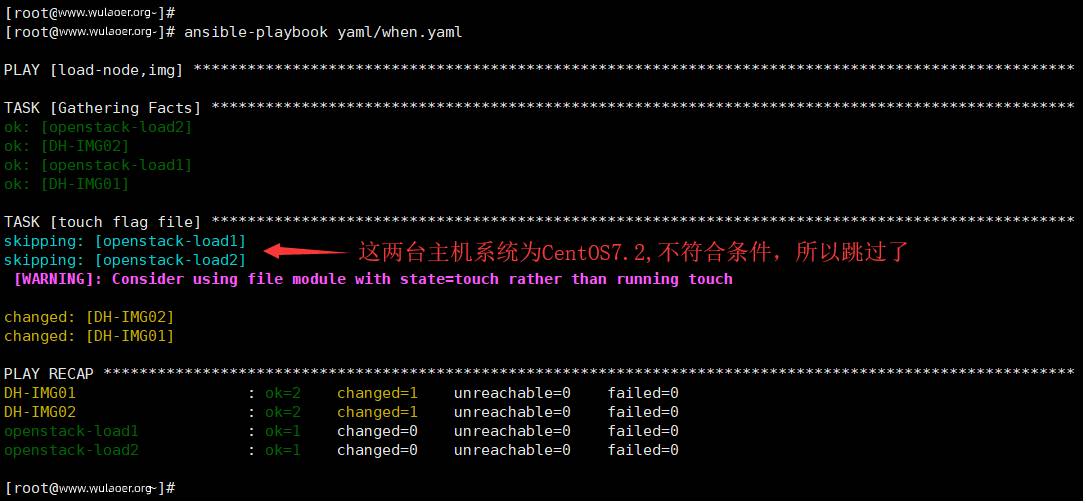
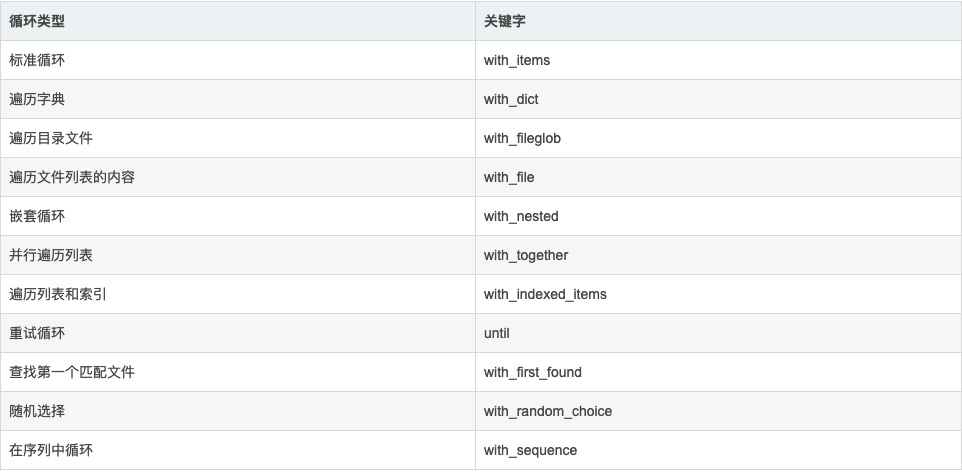
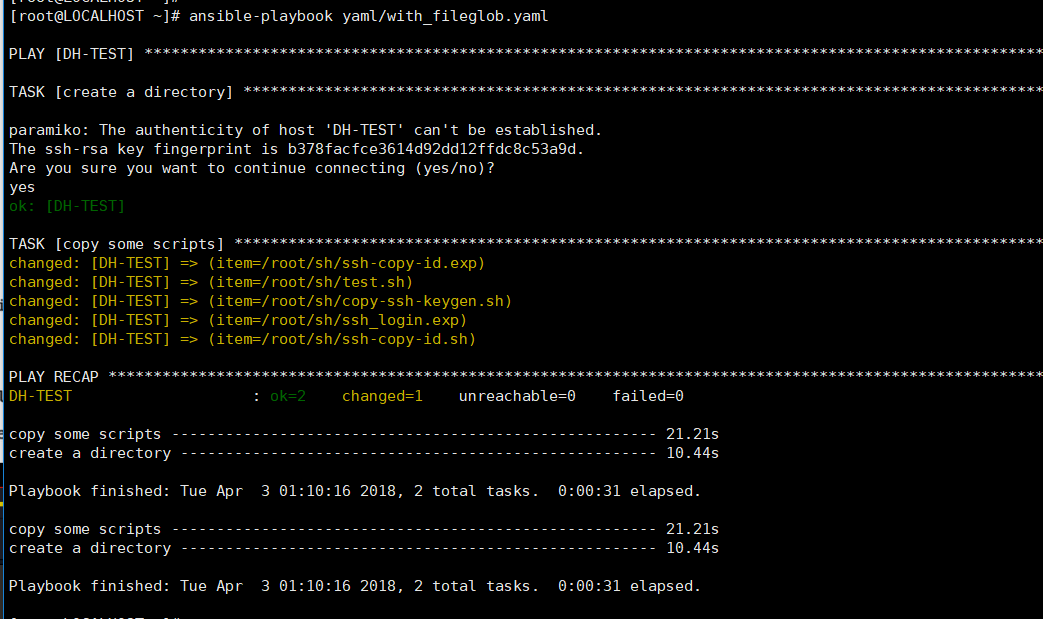
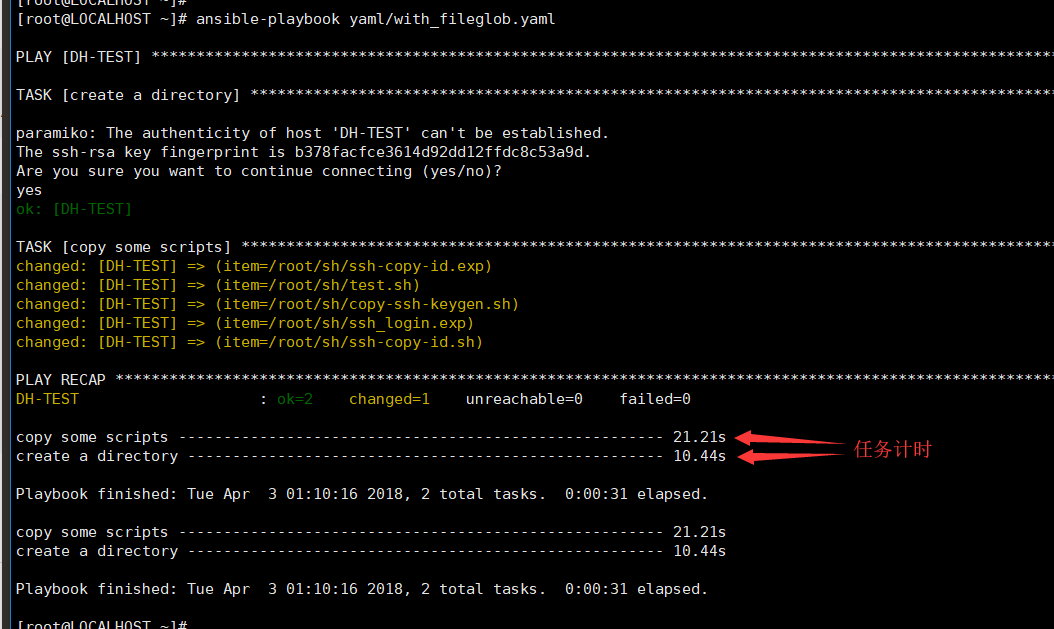
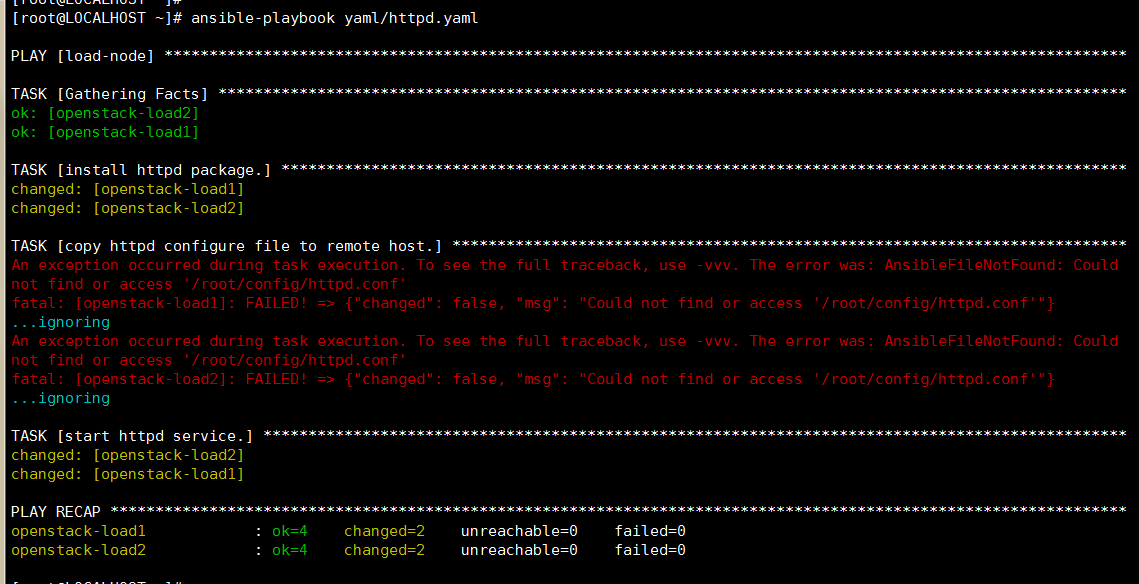
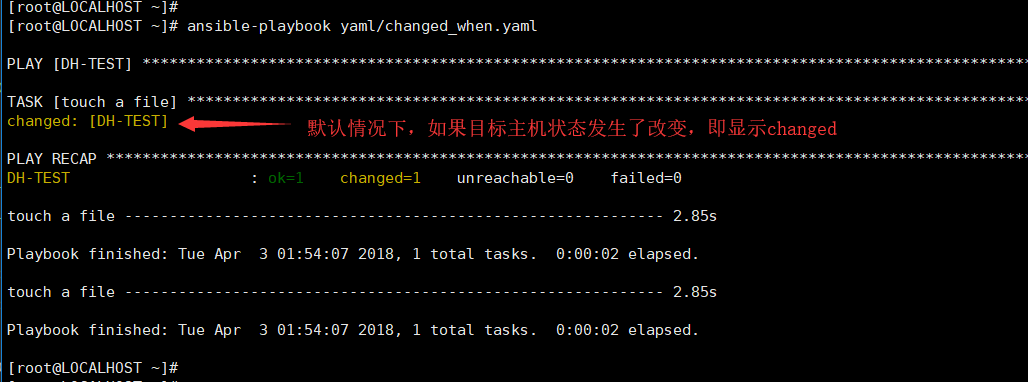
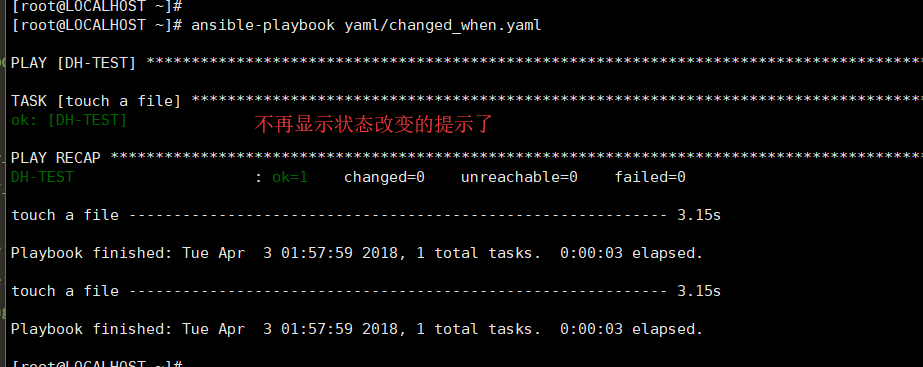
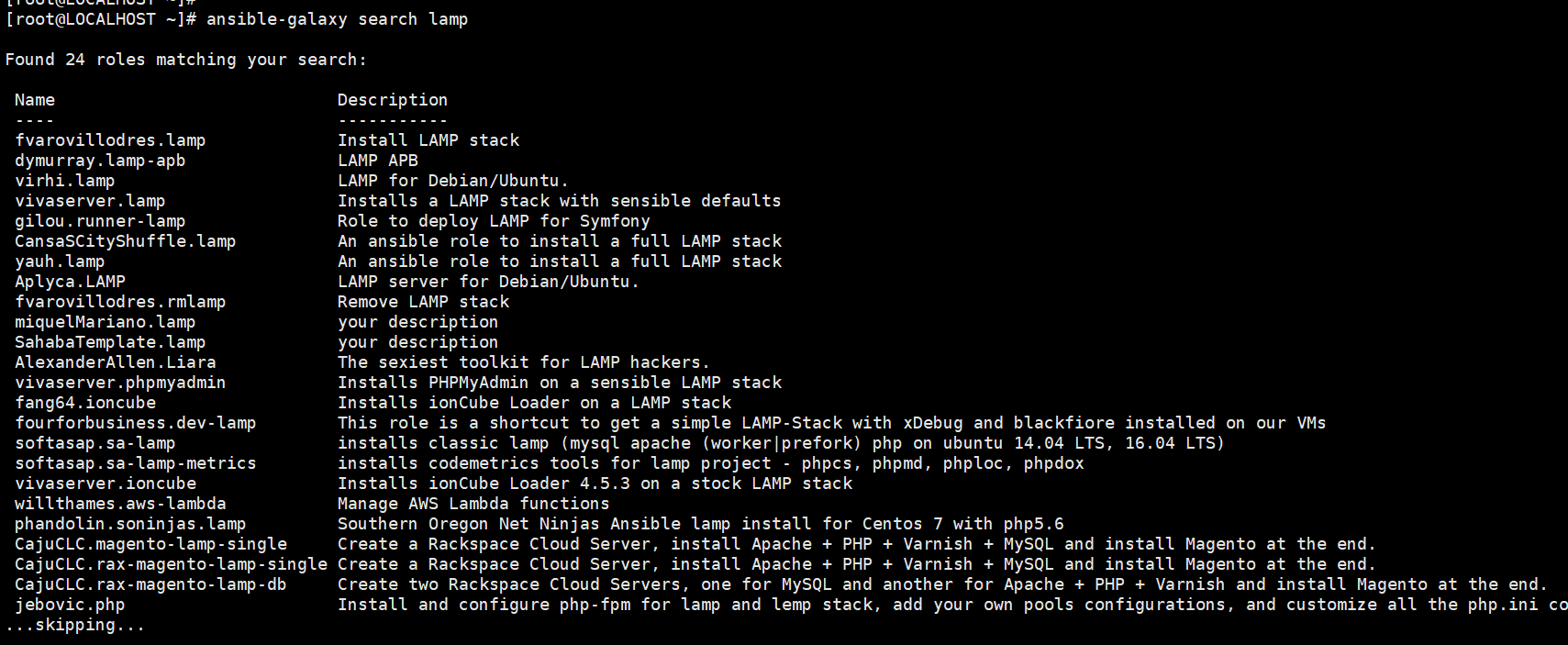
您可以选择一种方式赞助本站
支付宝扫一扫赞助
微信钱包扫描赞助
赏